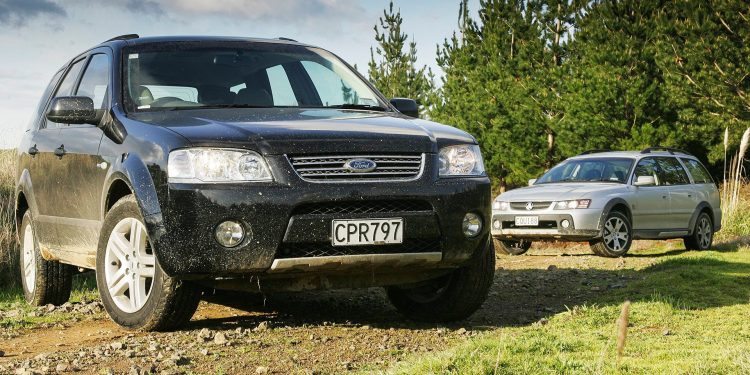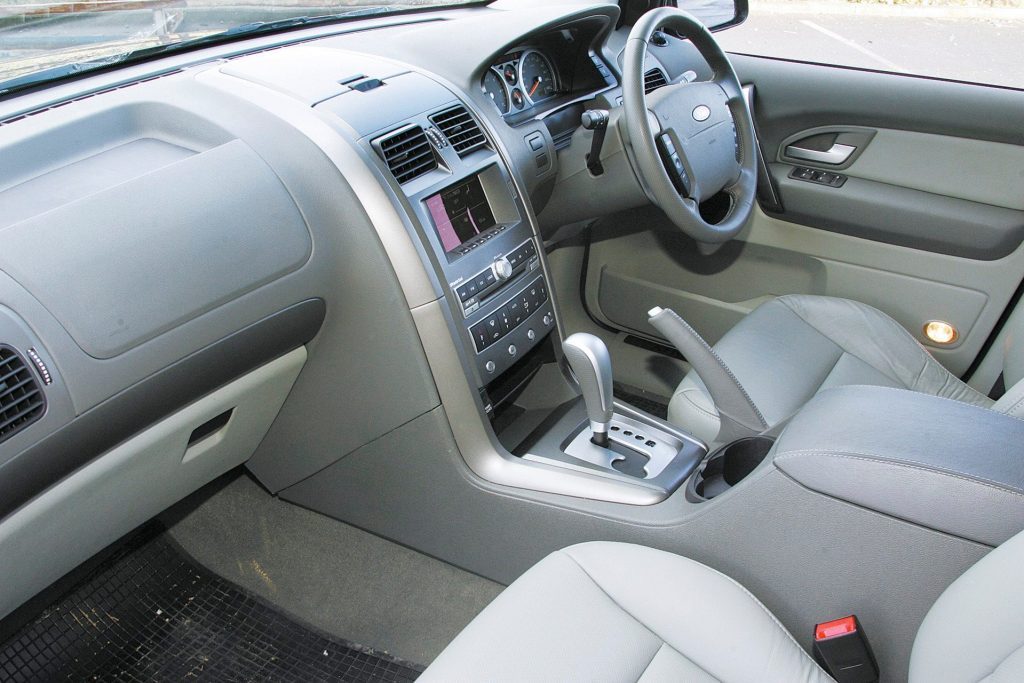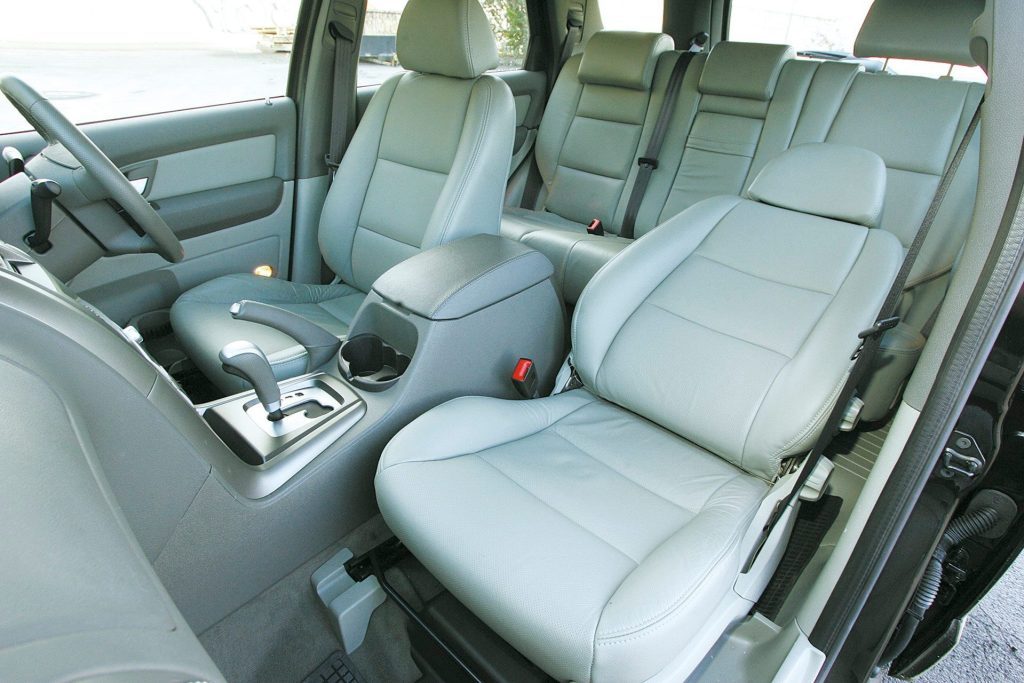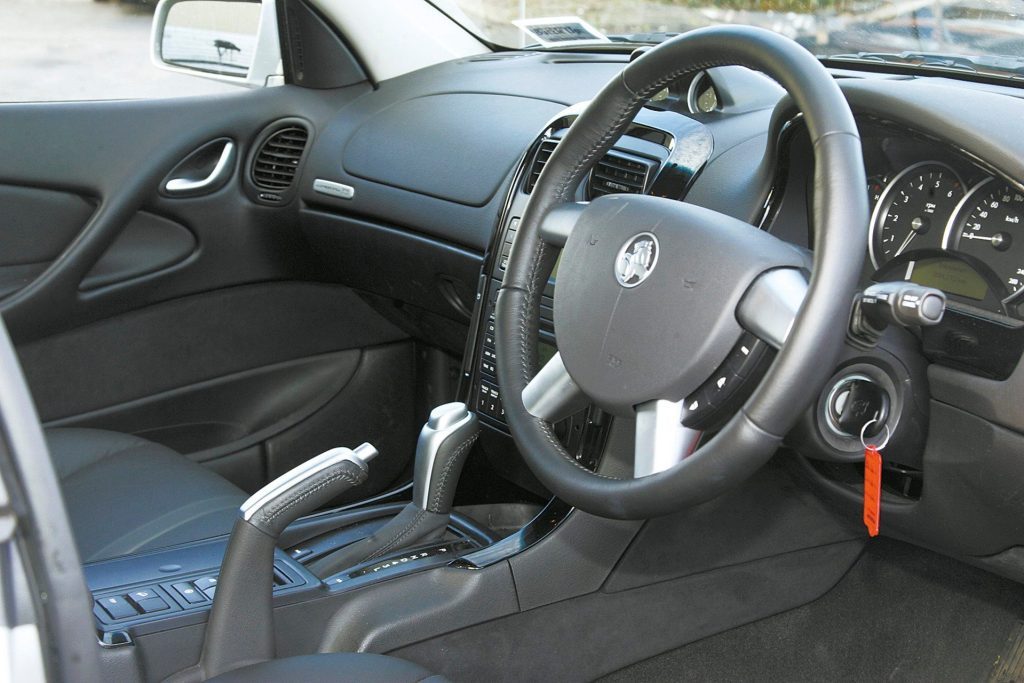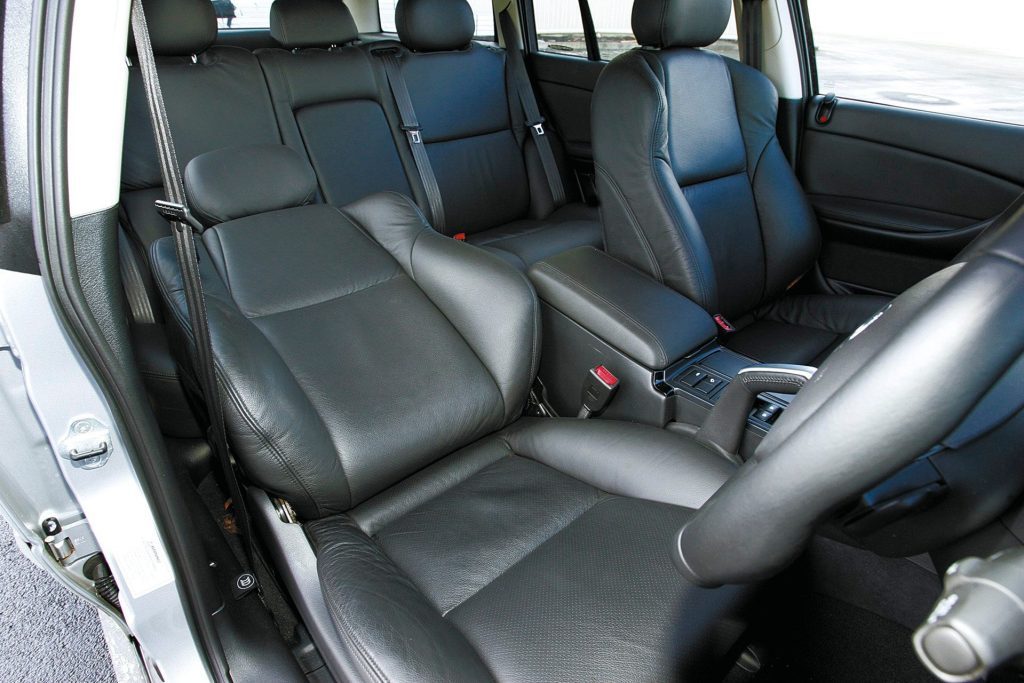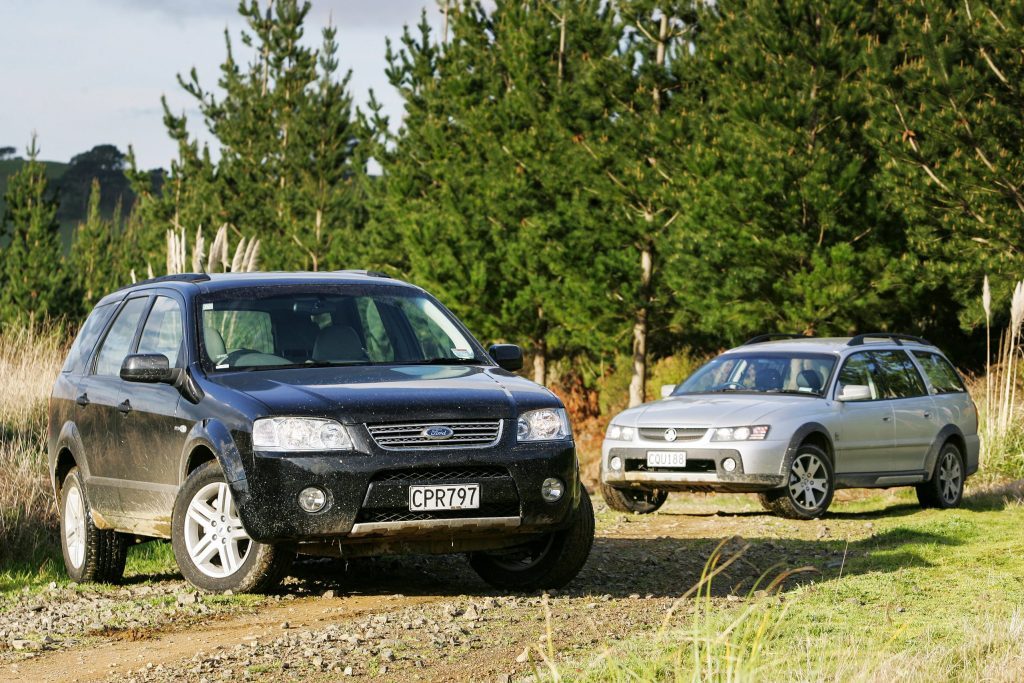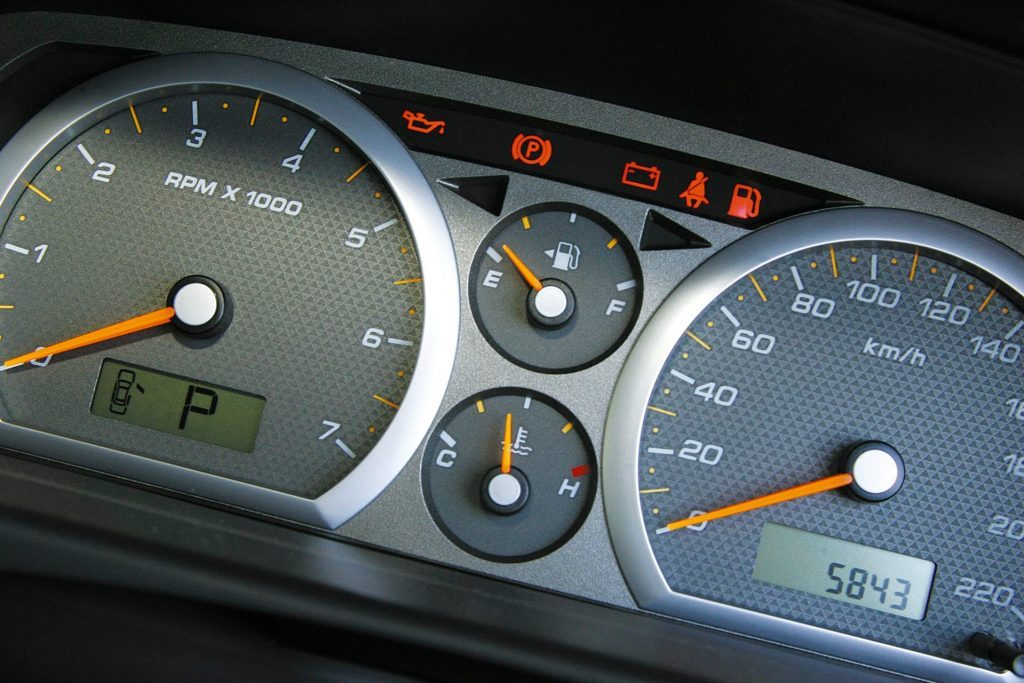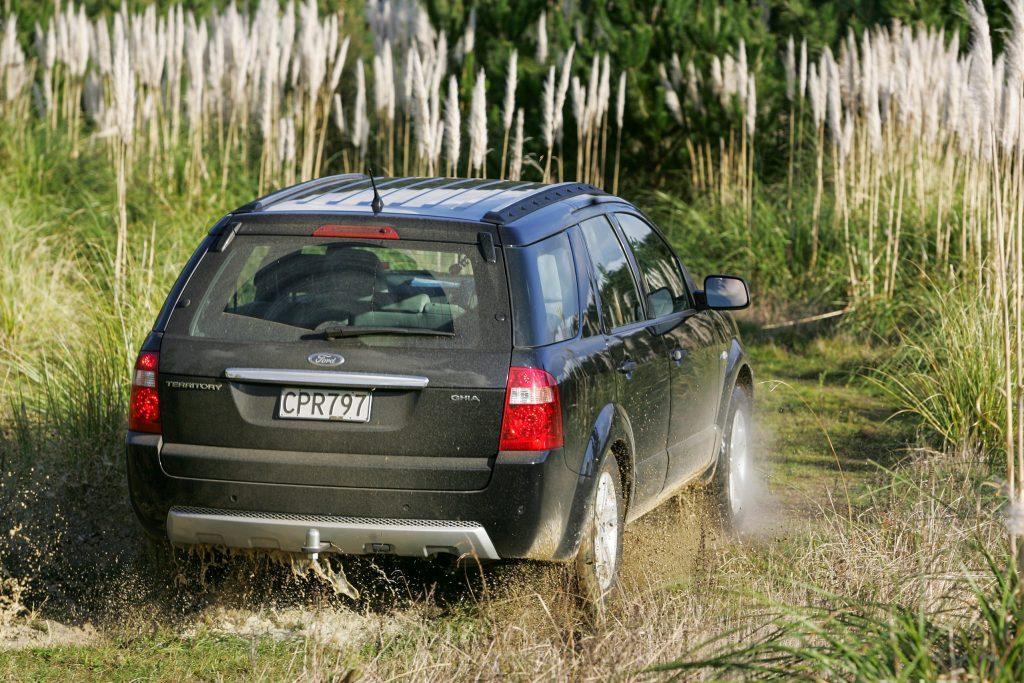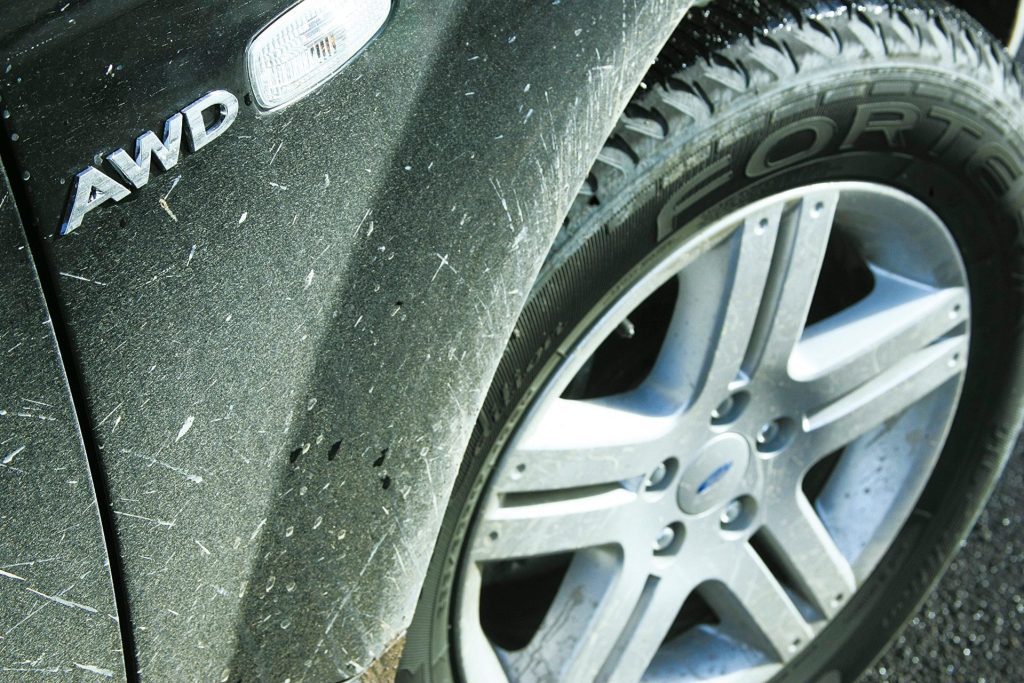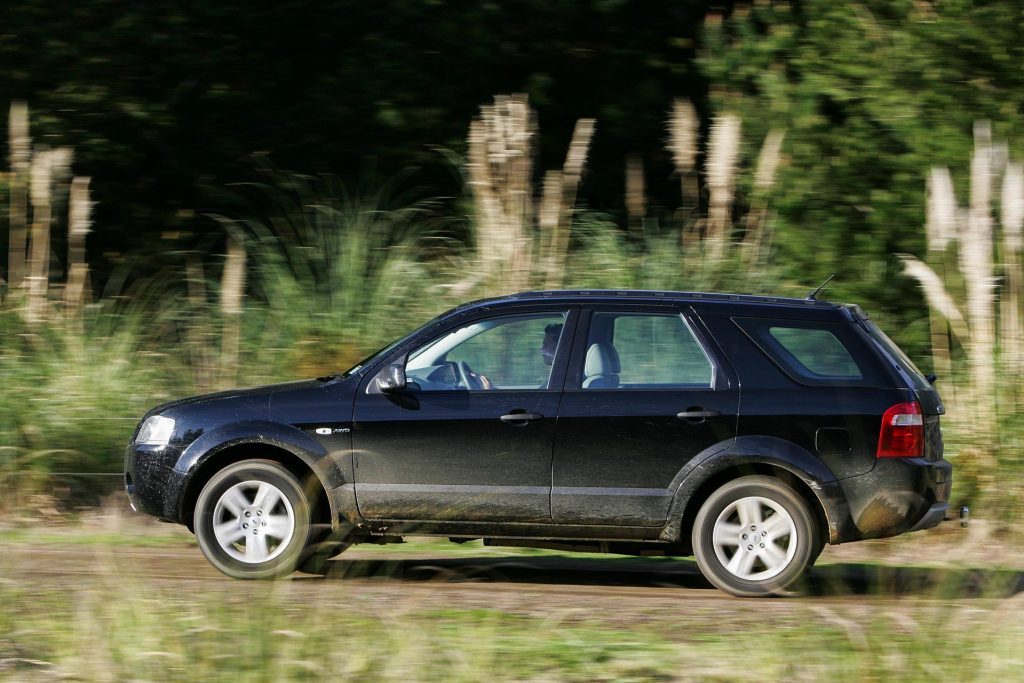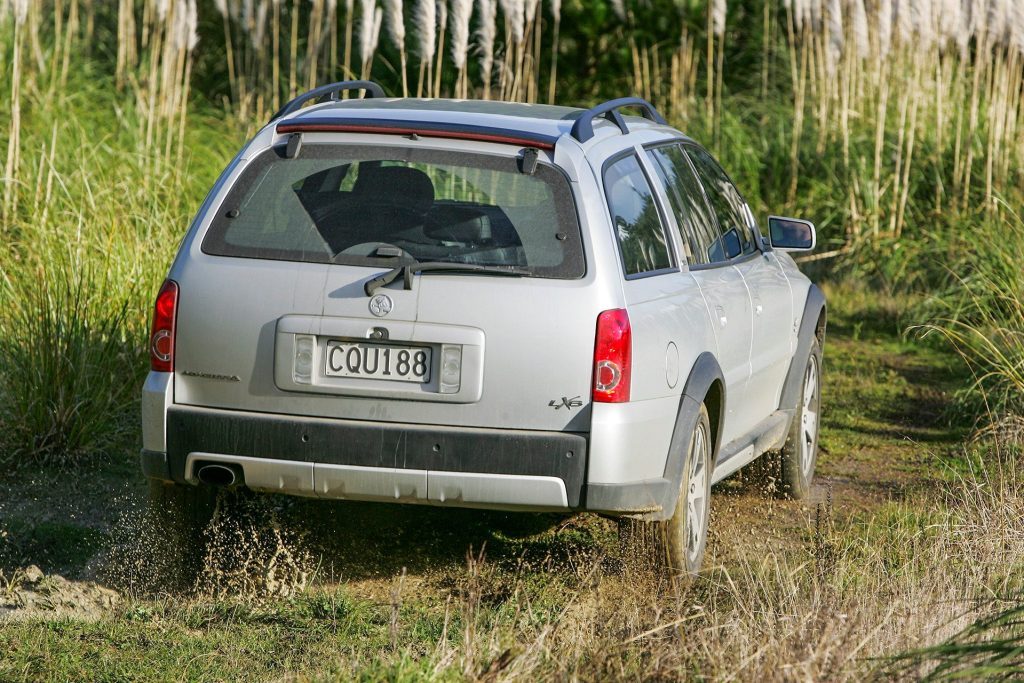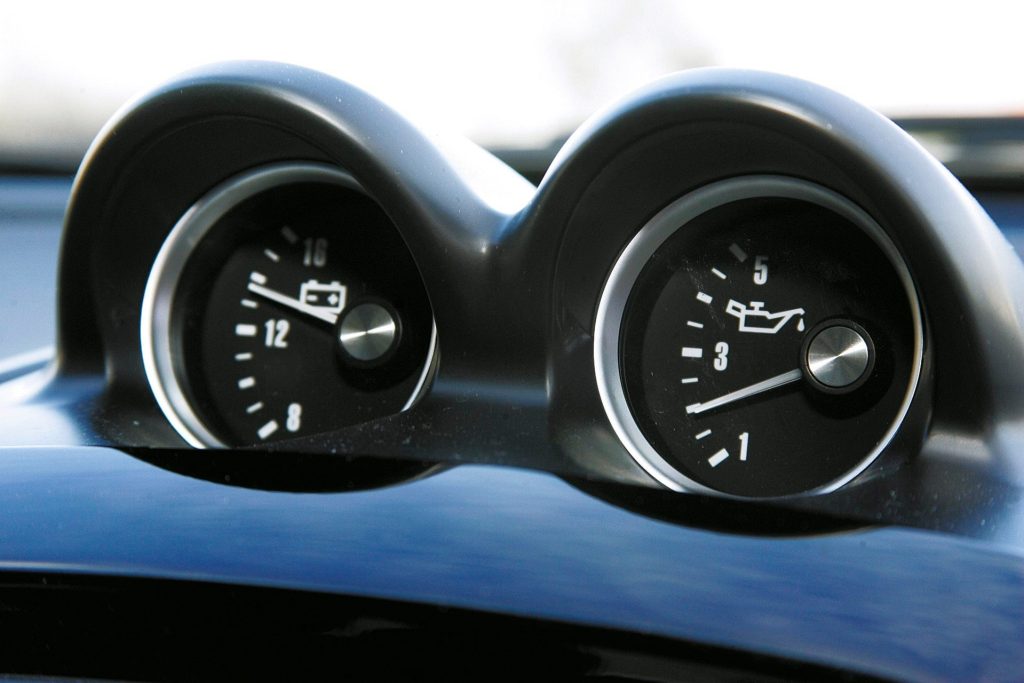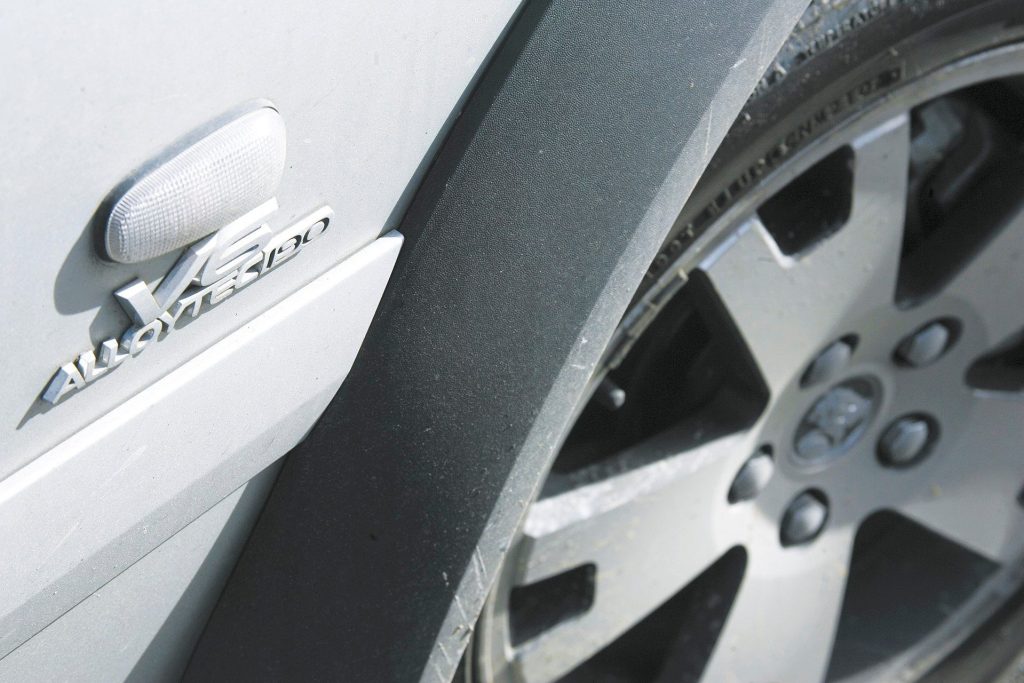2005 Ford Territory vs Holden Adventra comparison
Words: Paul Owen | Photos: Tom Gasnier
Ford versus Holden sales battles are usually a lot closer than this. We search for the reasons behind the Ford Territory outselling the Holden Adventra by four-to-one.
In recent times, Holden has taken out a mortgage on Bathurst wins, while Ford has done the same thing in terms of sewing up the V8 Supercar championship. Over in the marketplace, the battle between Falcon and Commodore has been just as hot as ever, with the latter currently topping the 2005 passenger car sales charts by a decent 1000-unit margin. In second place sits the Falcon, followed by the Toyota Corolla in third. However the fourth placed vehicle will surprise many. It’s the Ford Territory, the Falcon-based soft-roader Ford released to much acclaim in 2004. Territory has outsold all middleweight family cars this year, as well as a host of clever superminis that really should have made their marque in these days of rapidly-rising fuel prices.
So where was Holden’s Adventra, the General’s direct competitor for the Territory? In terms of the list of top 10 selling models, nowhere to be seen. With 1406 Territory sales logged by the end of July, Falcon-based products are definitely flavour of the year in 2005. Add Territory’s score to 2712 Falcon sales, and the combined numbers of Australian-made Ford sales quickly overtake Commodore’s 3714 registrations year-to-date. It’s up to Adventra to bridge this gap, to arrive like the cavalry at the 11th hour, and rescue the General’s beleaguered wagon train. Adventra might have got off on the wrong foot by only offering a V8 powertrain at its launch last year, but the time for excuses is over now that the V6 versions are here. Time then to compare the six-cylinder Adventra against its Ford-badged nemesis, to determine whether the former is capable of slowing Territory’s wild ride up the sales charts.
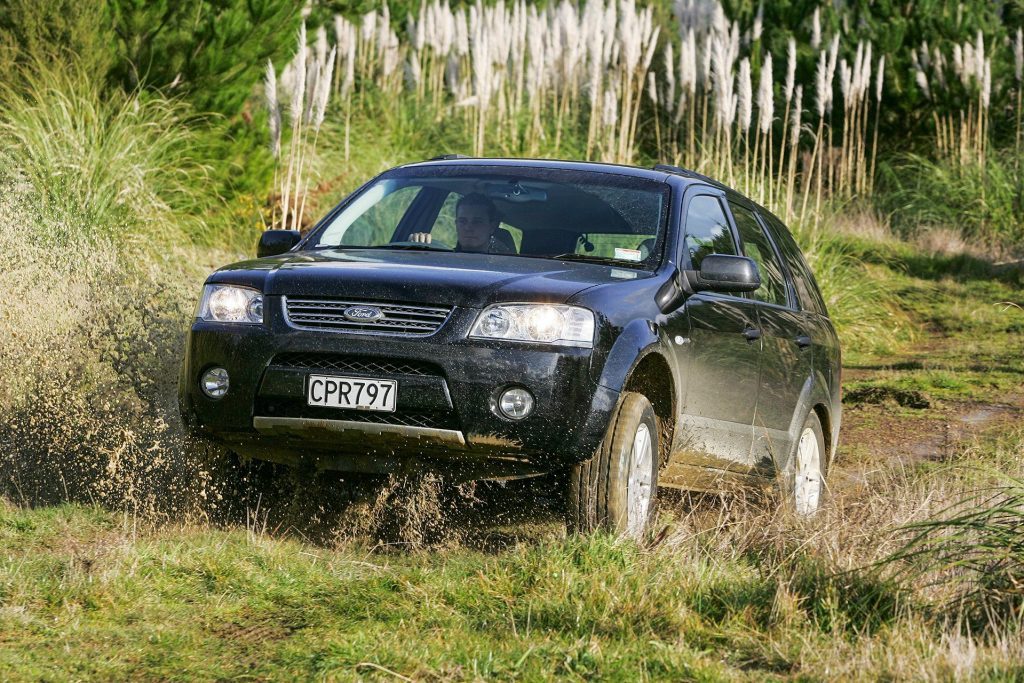
Price/Equipment
We chose to compare the top two models in the Adventra V6 and Territory line-ups, encouraged by their $90 price differential. A price of a night out separates this $63k twosome, reflecting perhaps a lost opportunity for Holden to undercut Ford. For the Adventra cost less to develop than the Territory, and potentially could have presented an opportunity to beat Henry at an automotive marketing game Ford’s founder largely invented, i.e. increasing sales volume by making the product more accessible.
As you’d expect of two Aussie vehicles wearing pricetags normally associated with executive cars, both the LX6 and Territory are loaded to the gunwales. Shared baubles include 17” alloys, electronic stability systems, ABS/EBD brakes systems, and foot-stomping stereos. The Holden’s extras are frivolous frills like the standard-issue sunroof and Hill Descent Control (just in case the Adventra does go where Commodores usually fear to tread). Ford wisely make HDC an option for Territory as it’s something most owners won’t ever use, and the Ghia’s equipment advantages are features of more value to most families – the third-row of seats, and head-protecting air curtains where the Holden has neither. It’s worth paying the extra $90 for the Ford just to secure those.
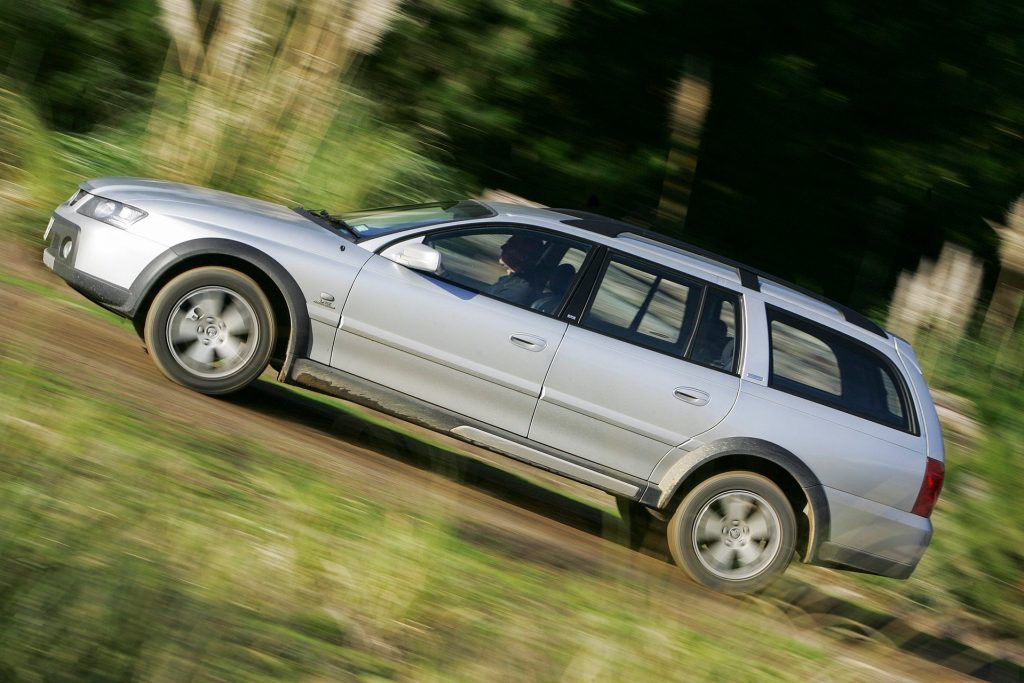
Design/Engineering
Here’s where the differences between these two really make their presence known. Ford spent up big on a distinctive new body for the Territory, whereas Holden targeted a considerably smaller development budget mostly at the LX6’s powertrain. The result is that Ford stands out as a different vehicle to a Falcon on the school run, where the Holden wears hand-me-down clothes from a Commodore wagon. Adventra is therefore unlikely to be the talk of the next PTA meeting.
It gets worse for the Holden on the inside, for there is the same Commodore wagon interior staring at you, albeit one fitted with trim more usually associated with HSV. Territory might have a dash fascia that resembles a Falcon’s, but the rest is new, with enough cubbies and cupholders to encourage favourable comparisons with more expensive crossovers and SUVs.
Powertrain wise, the Holden wins the numbers game. The new 3.6 litre ‘Alloytec’ V6 pumps out 190kW to the Ford’s 182, plus there are five forward ratios to process the power, where the Territory makes do with four. On the blue side of the ledger, the 4.0 litre Ford inline six has a 40Nm torque advantage thanks to its extra 400cc of capacity. The old campaigner might be able to trace some aspects of its design all the way back to 1957, but still slugs it out with Holden’s best six thanks to the variable valve timing and dual-overhead-cam 24-valve cylinder head. Holden’s new six enjoys similar cylinder head modernisation, but can’t match the low-down grunt of the pushrod Buick-derived engine it replaced. Meanwhile, Holden’s transmission advantage is likely to be a short one, as Ford Australia is about to drop ZF’s reference-grade six-speed auto into its products. A Territory with the same tranny as a Jaguar or a BMW? Bring it on.
Performance
Territory stakes no claim on performance supremacy, thanks to its 100kg weight handicap, and minor power deficit. The Holden is the friskier vehicle in just about every criteria we measure, and the margins it established in the acceleration and braking tests were significant ones. The Adventra LX6 is definitely the one to go for out of this pair if seeking performance comparable to the usual rear-drive Aussie big six.
However, is the crossover buyer really interested in the Holden’s ability to get to the legal speed limit 1.5 seconds quicker than the Ford? Of more use will be it’s pruning of the Territory’s 80-120 overtaking sprint by almost a second, and its three-metre shorter emergency stop from 100 km/h. Lower cabin noise levels, and a more accurate speedo than the Ford complete the General’s rout of the enemy in the statistical battle. Objectively measured against Territory, the Holden is definitely the faster, quieter, and more abrupt-stopping car. There’s just one thing wrong with the picture that our test figures draw. The six-cylinder Adventra doesn’t really advertise its performance advantage from the driver’s seat.
Instead, it is the Ford that feels the more effortless drive. Territory may not win any drag-races, but it’s performance at lower engine speeds trumps the Holden’s. Where the GM V6 requires the driver to dial up plenty of rpm before it will boogie, the Ford inline six is more adept at shifting Territory’s extra mass at light throttle settings and low rpm. We suspect the crossover buyer might appreciate the easy-going nature of the Ford’s power delivery more than the Holden’s top-end performance. Those with something heavy to tow will definitely find the Ford’s low-rpm torque advantage handy.
The better access to Territory’s torque peak also encourages the use of lighter throttle settings in the Ford. Although the Holden has higher gearing that allows it to cruise the open road in top gear at a lower engine speed, we noticed the Territory used less fuel than the Adventra during our testing. However there’s no way we’d call either vehicle frugal, and Japanese alternatives offer more economical running costs. Meanwhile both these Aussie all-wheel-drivers could have been designed by OPEC. Approximate average fuel use figures on test were 17.2 litres per 100km for the Territory, and 18.5 litres/100km for the LX6. Fuel vouchers will make great Chrissie presents for owners of either.
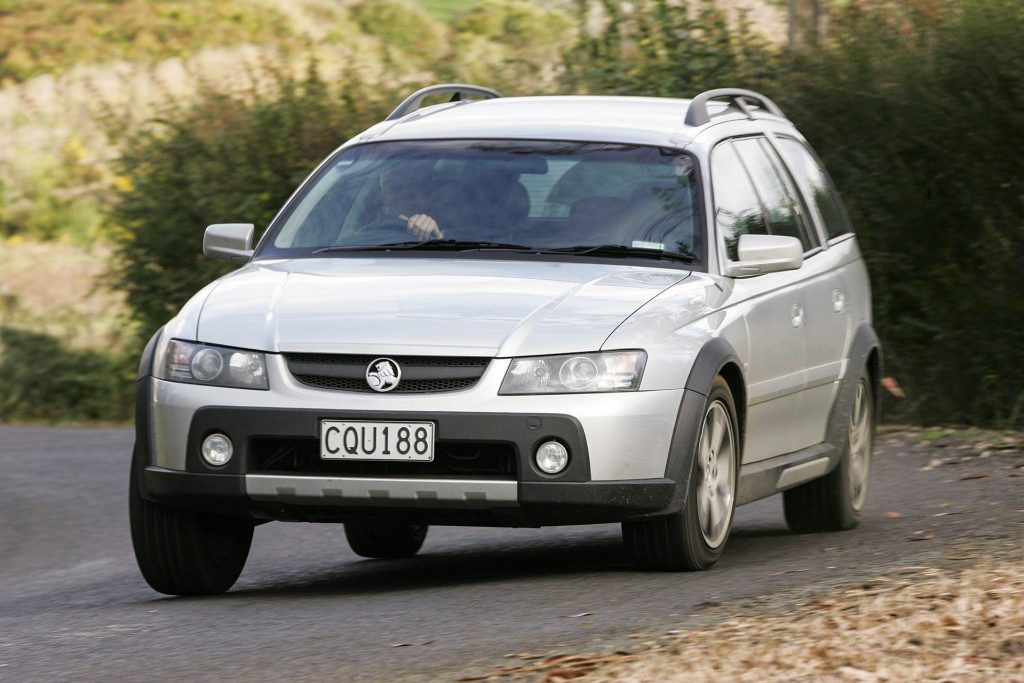
Driving Dynamics
Here’s where you get what you pay for with this pair. Their all-wheel-drive systems may blow out their weight figures to SUV proportions, but the payoff is trustworthy and entertaining handling over a wider variety of surfaces than their rear-drive brethren. And the rougher the road, the more these two Outbackers like it. They have plenty of suspension travel to soak up trailer-swallowing potholes, and both can take vicious corrugations in their stride thanks to their well-considered springs and damping rates. In urban driving, neither needs to slow for speed humps to prevent occupants bumping their heads on their ceilings…
The dynamic differences are harder to identify than shared attributes with this pair. The Ford’s lighter steering effort is more likely to be appreciated in this segment than the Holden’s extra measure of tactile communication at the tiller. The Territory’s back end also feels a little more composed on bumpy backroads, and more immune to sudden camber changes. On the plus side for the Holden is that it feels the more sporty drive. The driver sits lower, closer to the Adventra’s centre of gravity, and this adds to its appeal for enthusiastic drivers. The Holden’s lower centre of gravity also delays understeer to slightly higher cornering speeds than the Ford, although only the sensitive will notice. For a high-riding, two-tonne multi-purpose vehicle, Territory has a dynamic ability that’s way beyond all expectations, hence our giving it the same score as the LX6 in this section.
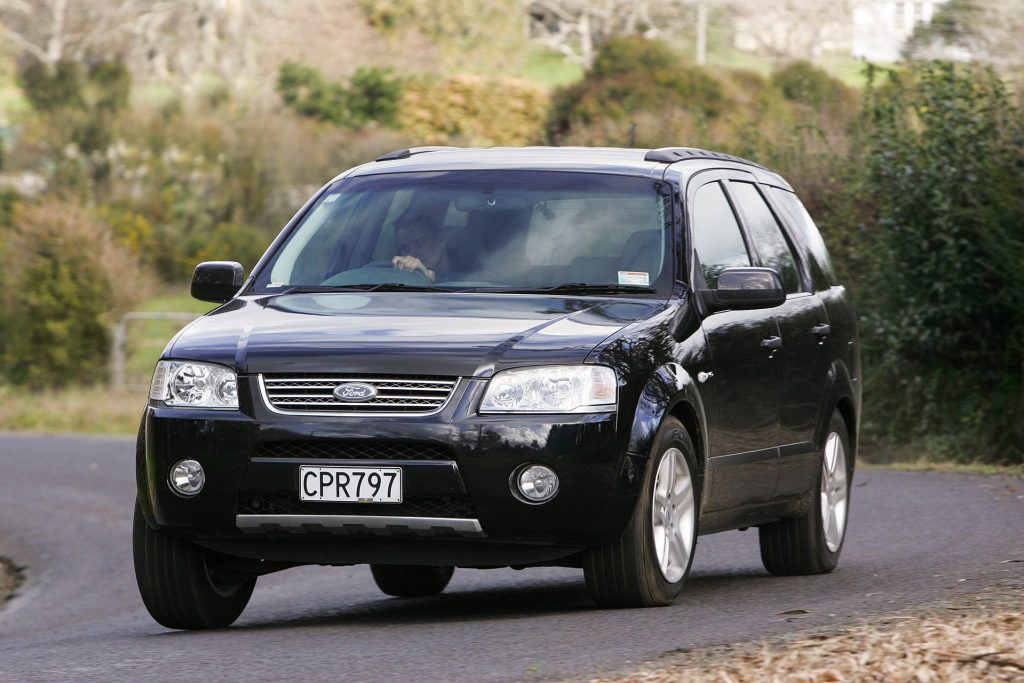
Comfort and Convenience
Got a need to seat seven, Kevin? Go straight past the Holden dealer, and invest more than monopoly money in the Territory. The standard-issue third row seating in the Ghia will be appreciated anytime the kids are playing an ‘away’ game, or the buses are on strike. The extra row of seats also folds away conveniently into the luggage bay floor when not required, creating a massive 1153 litres of payload space behind the second row in the Ford. The only alternative for Adventra buyers also in need of extra seats is a dealer-fit option that doesn’t offer the same comfort or fold away as neatly.
Up front, both vehicles reflect their origins in their tailoring. Falcon owners will instantly recognise Territory’s softer seat foam, which, while it feels plusher than the Adventra’s in the showroom, doesn’t provide quite the same body-hugging support over long drives. Meanwhile the Adventra’s steering wheel mounted manual shift paddles are a nice idea that’s been slightly let down by the need to press a button to activate them. It would be nice to instantly touch the downshift paddle a couple of times to shorten an overtaking manoeuvre given the Holden’s peakier power delivery, but no doubt some nanny of a safety guru insisted on the over-ride button to prevent accidental shifts.
The Ford might only have a manual shift mode at the gearlever, but Territory’s driver enjoys the more user-friendly audio, power window, and heater/air-con controls. Meanwhile Adventra drivers will recognise the extra quality of the materials they touch on the steering wheel, handbrake and gearlever. They’ll also appreciate the self-levelling nature of the Holden’s rear suspension when the Adventra is fully loaded. Meanwhile the Ford’s extra cupholders and storage compartments even the score. It’s only the Territory’s extra versatility, via the third-row seats, that earns it the extra points in this sector.
| Model | Ford Territory Ghia |
| Price | $62,990 |
| Engine | 3984cc, IL6, EFI |
| Power | 182kW/380Nm |
| Drivetrain | 4-speed auto, AWD |
| Fuel Use | 13.1L/100km |
| 0-100km/h | 10.15sec |
| Weight | 2115kg |
| Model | Holden Adventra LX6 |
| Price | $62,900 |
| Engine | 3565cc V6, EFI |
| Power | 190kW/340Nm |
| Drivetrain | 5-speed auto, AWD |
| 0-100km/h | 8.59sec |
| Weight | 1938kg |
This article originally appeared in the September 2005 issue of NZ Autocar Magazine.


